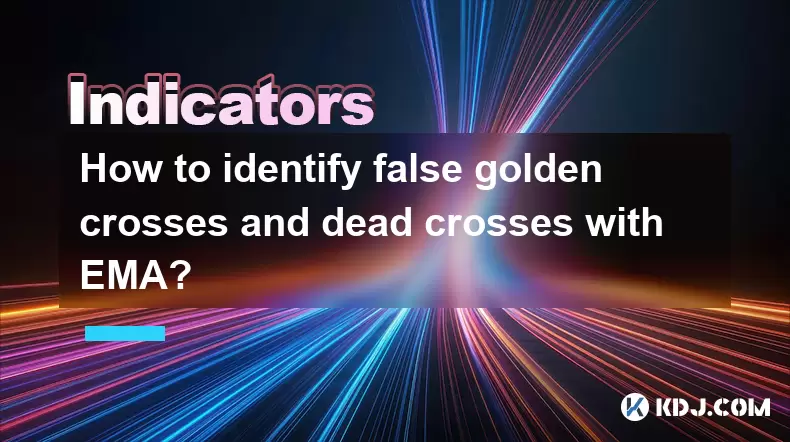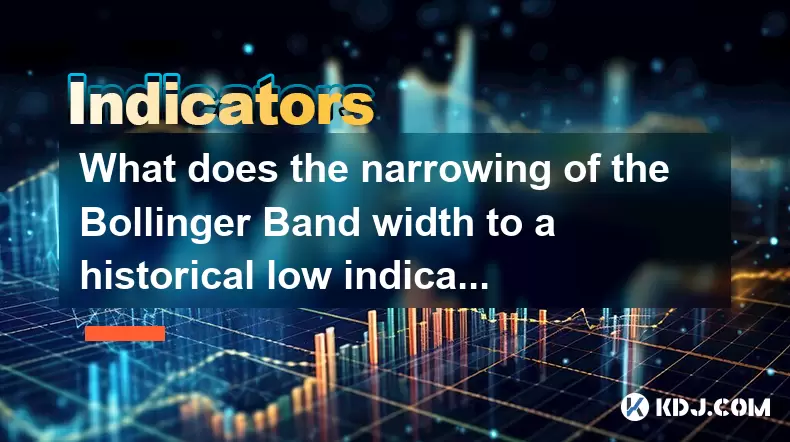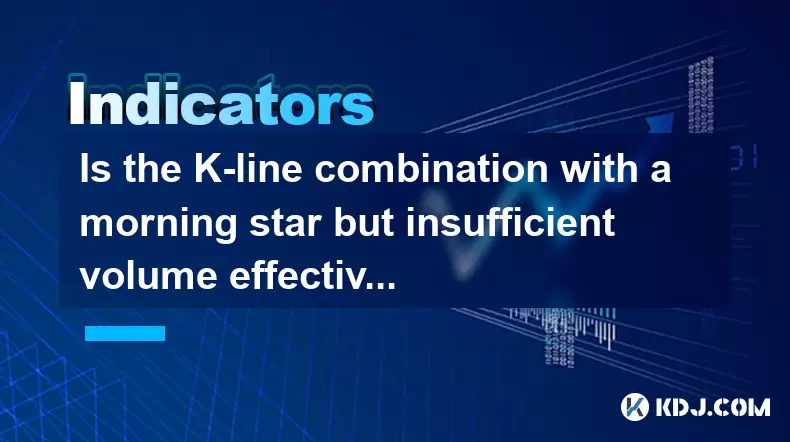-
 Bitcoin
Bitcoin $101,898.5005
-0.75% -
 Ethereum
Ethereum $2,258.1125
-1.07% -
 Tether USDt
Tether USDt $1.0004
0.01% -
 XRP
XRP $2.0178
-2.93% -
 BNB
BNB $624.0243
-1.53% -
 Solana
Solana $134.3298
-0.90% -
 USDC
USDC $0.9999
0.01% -
 TRON
TRON $0.2675
-2.05% -
 Dogecoin
Dogecoin $0.1538
-1.96% -
 Cardano
Cardano $0.5482
-1.11% -
 Hyperliquid
Hyperliquid $35.5636
5.45% -
 Bitcoin Cash
Bitcoin Cash $453.4902
-1.66% -
 Sui
Sui $2.5134
-2.97% -
 UNUS SED LEO
UNUS SED LEO $9.1292
1.77% -
 Chainlink
Chainlink $11.8457
-1.60% -
 Stellar
Stellar $0.2312
-2.73% -
 Avalanche
Avalanche $16.9721
0.29% -
 Toncoin
Toncoin $2.7549
-3.82% -
 Shiba Inu
Shiba Inu $0.0...01081
-1.10% -
 Litecoin
Litecoin $80.8250
-0.71% -
 Hedera
Hedera $0.1374
0.21% -
 Monero
Monero $305.4827
-2.36% -
 Ethena USDe
Ethena USDe $1.0006
0.00% -
 Dai
Dai $1.0000
-0.01% -
 Polkadot
Polkadot $3.2085
-3.12% -
 Bitget Token
Bitget Token $4.0845
-3.13% -
 Uniswap
Uniswap $6.3353
-1.63% -
 Pi
Pi $0.5085
-0.70% -
 Pepe
Pepe $0.0...08913
-3.82% -
 Aave
Aave $232.7090
-0.58%
How to identify false golden crosses and dead crosses with EMA?
Use EMA to spot false golden and dead crosses in crypto trading by checking volume, looking for divergences, monitoring price action, and analyzing market context.
May 22, 2025 at 10:49 pm

In the world of cryptocurrency trading, understanding technical indicators can be crucial for making informed decisions. Among these, the golden cross and the dead cross are two of the most widely discussed signals, often used to predict bullish and bearish market trends, respectively. However, false signals can lead traders astray. In this article, we will delve into how to identify false golden crosses and dead crosses using the Exponential Moving Average (EMA).
Understanding Golden Crosses and Dead Crosses
A golden cross occurs when a short-term moving average, such as the 50-day EMA, crosses above a long-term moving average, like the 200-day EMA. This event is considered a bullish signal, suggesting that the asset's price may continue to rise. Conversely, a dead cross happens when the short-term EMA crosses below the long-term EMA, indicating a potential bearish trend.
While these signals can be powerful, they are not infallible. False signals occur when the anticipated trend does not materialize after the cross. Identifying these false signals can save traders from making costly mistakes.
The Role of EMA in Identifying False Signals
The Exponential Moving Average (EMA) gives more weight to recent prices, making it more responsive to new information than the Simple Moving Average (SMA). This characteristic makes EMA a valuable tool for traders looking to identify false signals.
To effectively use EMA in spotting false golden and dead crosses, traders need to understand the context of the market and the behavior of the EMA lines. Let's explore the steps to identify these false signals.
Identifying False Golden Crosses
A false golden cross can occur when the short-term EMA crosses above the long-term EMA, but the price does not continue to rise as expected. Here's how to identify such false signals:
Check the Volume: A true golden cross is often accompanied by an increase in trading volume. If the volume does not increase significantly, it might be a false signal.
Look for Divergences: If the price is making higher highs but the EMA lines are not following suit, this divergence can indicate a false golden cross.
Monitor the Price Action: After the golden cross, observe the price action. If the price fails to break above recent resistance levels, it could be a sign of a false signal.
Analyze the Market Context: Consider the broader market trend. If the overall market is bearish, a golden cross might be less reliable.
Identifying False Dead Crosses
Similarly, a false dead cross occurs when the short-term EMA crosses below the long-term EMA, but the price does not continue to fall as anticipated. Here's how to identify these false signals:
Check the Volume: A true dead cross should be accompanied by a significant increase in trading volume. A lack of volume increase can indicate a false signal.
Look for Divergences: If the price is making lower lows but the EMA lines are not confirming this trend, it might be a false dead cross.
Monitor the Price Action: After the dead cross, observe the price action. If the price fails to break below recent support levels, it could be a sign of a false signal.
Analyze the Market Context: Consider the broader market trend. If the overall market is bullish, a dead cross might be less reliable.
Using Additional Indicators to Confirm Signals
While EMA is a powerful tool, using it in conjunction with other indicators can help confirm or refute signals. Some useful indicators include:
Relative Strength Index (RSI): The RSI can help identify overbought or oversold conditions, which can be useful in confirming or questioning a golden or dead cross.
Moving Average Convergence Divergence (MACD): The MACD can provide additional confirmation of trends and potential reversals.
Bollinger Bands: These can help identify volatility and potential price breakouts or breakdowns.
Practical Example of Identifying a False Golden Cross
Let's walk through an example of identifying a false golden cross using a hypothetical cryptocurrency, CryptoX.
Initial Observation: You notice that the 50-day EMA of CryptoX has crossed above the 200-day EMA, suggesting a golden cross.
Check the Volume: You observe that the trading volume did not increase significantly during the cross. This raises a red flag.
Look for Divergences: You see that while the price of CryptoX is making higher highs, the 50-day EMA is not following the same pattern, indicating a divergence.
Monitor the Price Action: After the golden cross, you notice that CryptoX fails to break above a recent resistance level at $500. This suggests that the bullish trend might not materialize.
Analyze the Market Context: The broader market is showing signs of a bearish trend, which could mean that the golden cross for CryptoX is less reliable.
In this scenario, the combination of low volume, divergence, failure to break resistance, and a bearish market context suggests that the golden cross for CryptoX might be a false signal.
Practical Example of Identifying a False Dead Cross
Now, let's consider an example of identifying a false dead cross using another hypothetical cryptocurrency, CryptoY.
Initial Observation: You notice that the 50-day EMA of CryptoY has crossed below the 200-day EMA, suggesting a dead cross.
Check the Volume: You observe that the trading volume did not increase significantly during the cross. This raises a red flag.
Look for Divergences: You see that while the price of CryptoY is making lower lows, the 50-day EMA is not following the same pattern, indicating a divergence.
Monitor the Price Action: After the dead cross, you notice that CryptoY fails to break below a recent support level at $200. This suggests that the bearish trend might not materialize.
Analyze the Market Context: The broader market is showing signs of a bullish trend, which could mean that the dead cross for CryptoY is less reliable.
In this scenario, the combination of low volume, divergence, failure to break support, and a bullish market context suggests that the dead cross for CryptoY might be a false signal.
Frequently Asked Questions
Q: Can the EMA period lengths be adjusted to better identify false signals?
A: Yes, adjusting the period lengths of the EMAs can help traders better identify false signals. For instance, using a shorter-term EMA like the 20-day EMA alongside the 50-day and 200-day EMAs can provide more granular insights into short-term trends and potential false signals. Experimenting with different period lengths can help traders find the combination that works best for their trading strategy.
Q: How can backtesting help in identifying false golden and dead crosses?
A: Backtesting involves applying trading strategies to historical data to see how they would have performed. By backtesting the identification of false golden and dead crosses, traders can refine their methods and better understand which indicators and conditions are most effective in spotting false signals. This can lead to more accurate predictions and better trading decisions.
Q: Are there any specific time frames that are more effective for identifying false signals with EMA?
A: The effectiveness of identifying false signals with EMA can vary depending on the time frame used. Shorter time frames, such as hourly or 4-hour charts, can be more sensitive to short-term fluctuations and may help identify false signals more quickly. However, longer time frames, like daily or weekly charts, can provide a more reliable view of the overall trend and may be better suited for identifying false signals in the context of broader market movements. Traders should experiment with different time frames to find what works best for their trading style and objectives.
Q: How can traders combine EMA with other technical analysis tools to improve their accuracy in identifying false signals?
A: Combining EMA with other technical analysis tools can significantly enhance a trader's ability to identify false signals. For example, using the RSI to check for overbought or oversold conditions can confirm or question a golden or dead cross. Similarly, the MACD can provide additional insights into trend strength and potential reversals. Bollinger Bands can help identify volatility and potential breakouts or breakdowns, adding another layer of analysis to confirm or refute EMA signals. By integrating multiple indicators, traders can build a more robust strategy for identifying false signals.
Disclaimer:info@kdj.com
The information provided is not trading advice. kdj.com does not assume any responsibility for any investments made based on the information provided in this article. Cryptocurrencies are highly volatile and it is highly recommended that you invest with caution after thorough research!
If you believe that the content used on this website infringes your copyright, please contact us immediately (info@kdj.com) and we will delete it promptly.
- Crypto Penny Coins: Hunting for Monster Gains in 2025
- 2025-06-24 02:45:12
- Ethereum Whale Dips Into Crashing ETH: Smart Move?
- 2025-06-24 02:25:12
- Shiba Inu vs. Rival Tokens: Navigating the Cryptocurrency Craze in NYC
- 2025-06-24 03:10:22
- Stablecoin Scramble: Market Structure and Bill Passage in the Crypto Wild West
- 2025-06-24 02:45:12
- Circle Stock Soars: Surpassing USDC Market Cap After GENIUS Act Boost
- 2025-06-24 03:10:22
- Pepe Coin's Open Interest Hints at Potential Rally: A Trader's Guide
- 2025-06-24 02:50:12
Related knowledge

How to interpret that the time-sharing chart shows "volume and price rise together" but the MACD red column shortens?
Jun 24,2025 at 01:08am
Understanding the Concept of 'Volume and Price Rise Together'In cryptocurrency trading, when a time-sharing chart shows that both volume and price rise together, it is typically interpreted as a sign of strong buying pressure. This means more traders are entering long positions, pushing the price higher while increasing the trading volume. This phenomen...

Is it contradictory that the moving average system is arranged in a bullish pattern but the DMI shows a decline in trend strength?
Jun 23,2025 at 11:43pm
Understanding the Moving Average and DMI RelationshipIn cryptocurrency trading, technical analysis plays a crucial role in identifying potential trends and making informed decisions. Two of the most commonly used indicators are the Moving Average (MA) and the Directional Movement Index (DMI). While both tools aim to provide insight into market direction...

How to interpret that the Williams indicator quickly turns back in the overbought area but does not fall below the 50-axis?
Jun 24,2025 at 02:01am
Understanding the Williams %R Indicator in Cryptocurrency TradingThe Williams %R indicator, often referred to as Williams Percent Range, is a momentum oscillator used by traders to identify overbought or oversold conditions in financial markets, including cryptocurrency. It ranges from 0 to -100, where values above -20 are considered overbought and thos...

What is the significance of the gap formed by the gap opening not being filled within five days?
Jun 23,2025 at 09:42pm
Understanding Gaps in Cryptocurrency TradingIn the world of cryptocurrency trading, a gap refers to a situation where the price of an asset jumps from one level to another without any trading activity occurring between those two levels. This often happens over weekends or holidays when the market is closed, and significant news or events occur that impa...

What does the narrowing of the Bollinger Band width to a historical low indicate?
Jun 24,2025 at 02:35am
Understanding Bollinger Bands and Their Role in Technical AnalysisBollinger Bands, developed by John Bollinger in the 1980s, are a popular technical analysis tool used to measure market volatility. They consist of three lines: a simple moving average (SMA) in the center, typically over a 20-period setting, and two outer bands that are set at a standard ...

Is the K-line combination with a morning star but insufficient volume effective?
Jun 24,2025 at 02:49am
Understanding the Morning Star K-line PatternThe morning star is a classic candlestick pattern indicating a potential reversal from a downtrend to an uptrend. It consists of three candles: a large bearish candle, followed by a small-bodied candle (often a doji or spinning top), and then a large bullish candle that closes within the range of the first ca...

How to interpret that the time-sharing chart shows "volume and price rise together" but the MACD red column shortens?
Jun 24,2025 at 01:08am
Understanding the Concept of 'Volume and Price Rise Together'In cryptocurrency trading, when a time-sharing chart shows that both volume and price rise together, it is typically interpreted as a sign of strong buying pressure. This means more traders are entering long positions, pushing the price higher while increasing the trading volume. This phenomen...

Is it contradictory that the moving average system is arranged in a bullish pattern but the DMI shows a decline in trend strength?
Jun 23,2025 at 11:43pm
Understanding the Moving Average and DMI RelationshipIn cryptocurrency trading, technical analysis plays a crucial role in identifying potential trends and making informed decisions. Two of the most commonly used indicators are the Moving Average (MA) and the Directional Movement Index (DMI). While both tools aim to provide insight into market direction...

How to interpret that the Williams indicator quickly turns back in the overbought area but does not fall below the 50-axis?
Jun 24,2025 at 02:01am
Understanding the Williams %R Indicator in Cryptocurrency TradingThe Williams %R indicator, often referred to as Williams Percent Range, is a momentum oscillator used by traders to identify overbought or oversold conditions in financial markets, including cryptocurrency. It ranges from 0 to -100, where values above -20 are considered overbought and thos...

What is the significance of the gap formed by the gap opening not being filled within five days?
Jun 23,2025 at 09:42pm
Understanding Gaps in Cryptocurrency TradingIn the world of cryptocurrency trading, a gap refers to a situation where the price of an asset jumps from one level to another without any trading activity occurring between those two levels. This often happens over weekends or holidays when the market is closed, and significant news or events occur that impa...

What does the narrowing of the Bollinger Band width to a historical low indicate?
Jun 24,2025 at 02:35am
Understanding Bollinger Bands and Their Role in Technical AnalysisBollinger Bands, developed by John Bollinger in the 1980s, are a popular technical analysis tool used to measure market volatility. They consist of three lines: a simple moving average (SMA) in the center, typically over a 20-period setting, and two outer bands that are set at a standard ...

Is the K-line combination with a morning star but insufficient volume effective?
Jun 24,2025 at 02:49am
Understanding the Morning Star K-line PatternThe morning star is a classic candlestick pattern indicating a potential reversal from a downtrend to an uptrend. It consists of three candles: a large bearish candle, followed by a small-bodied candle (often a doji or spinning top), and then a large bullish candle that closes within the range of the first ca...
See all articles
























































































